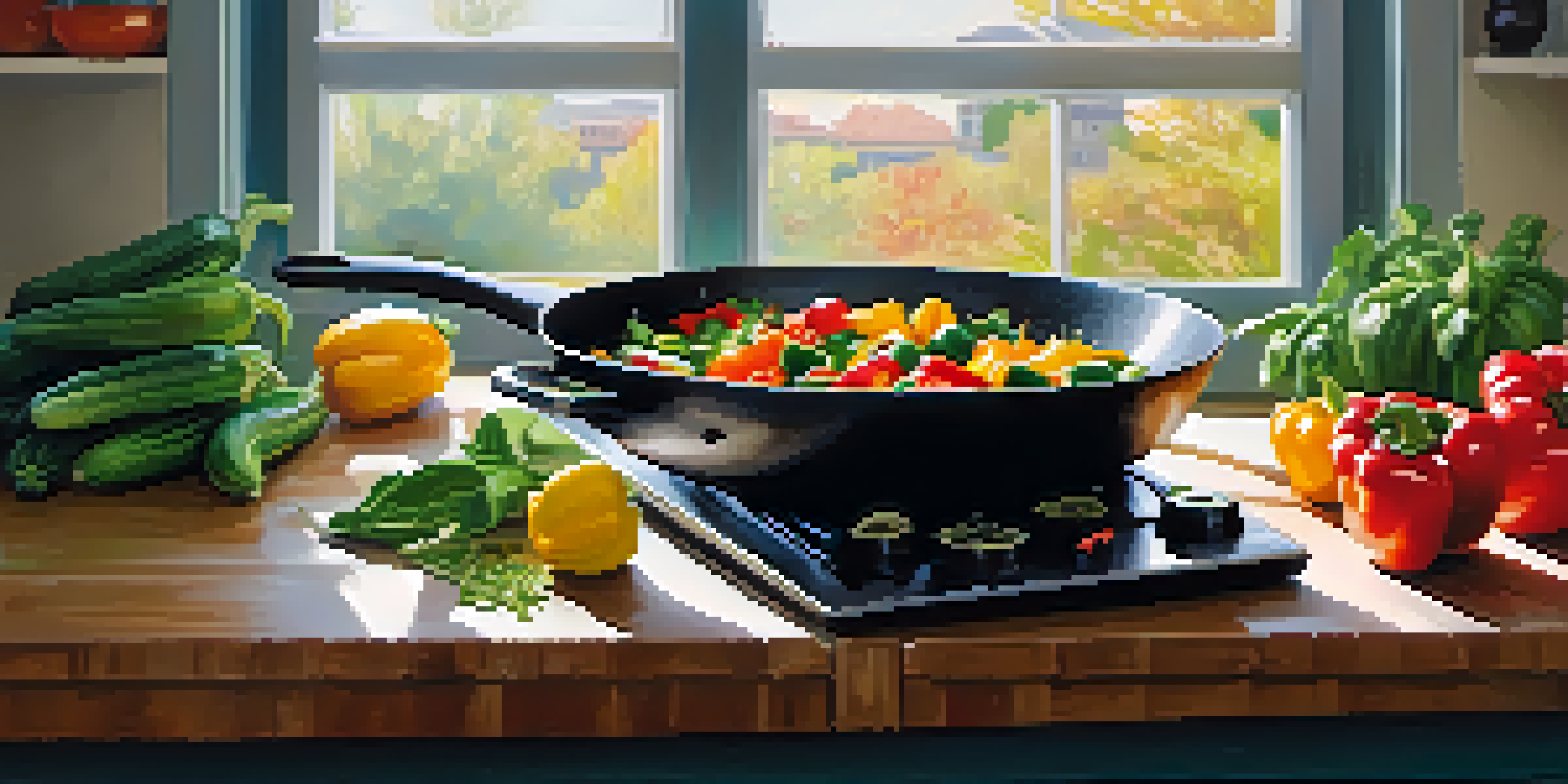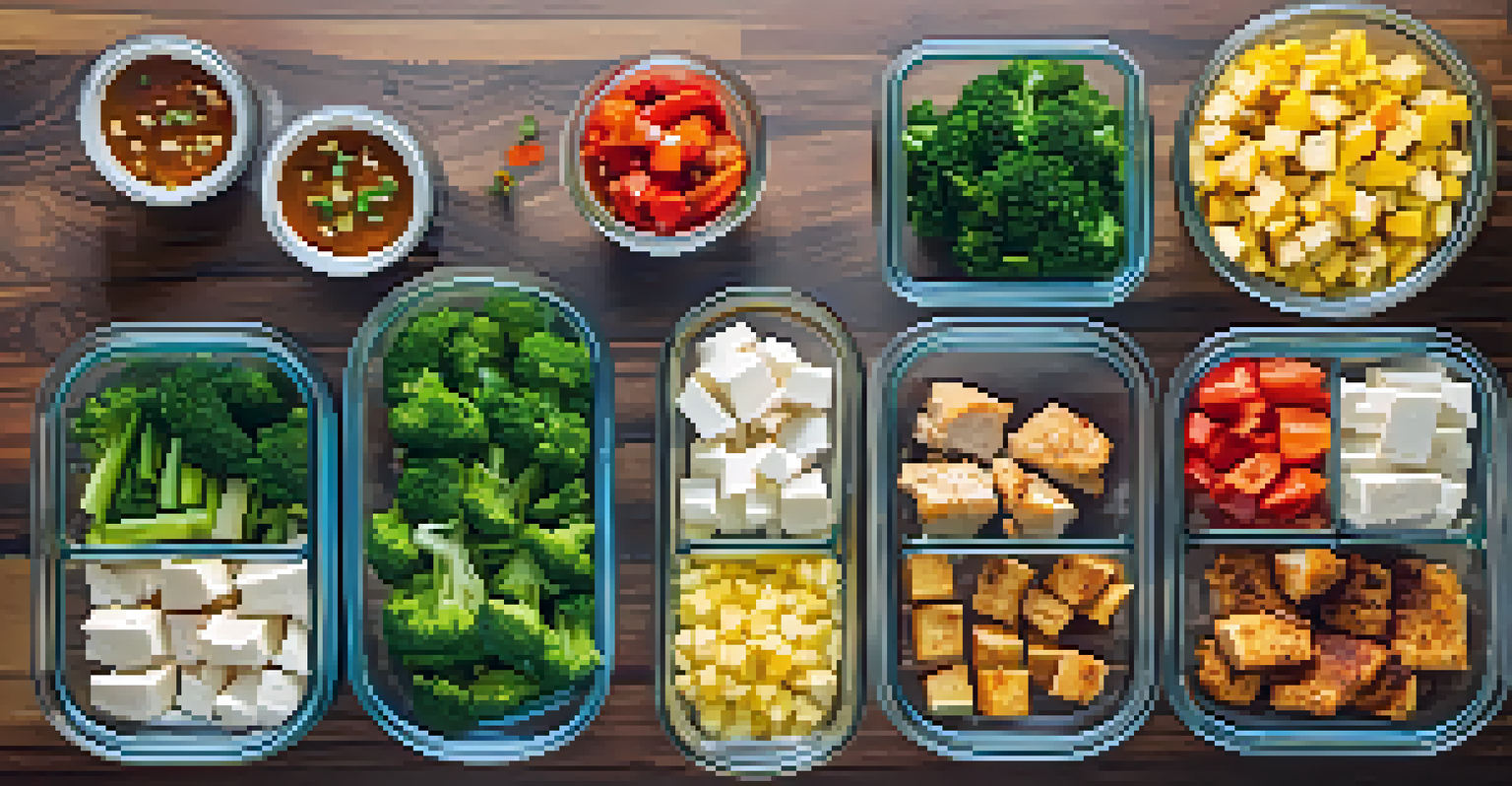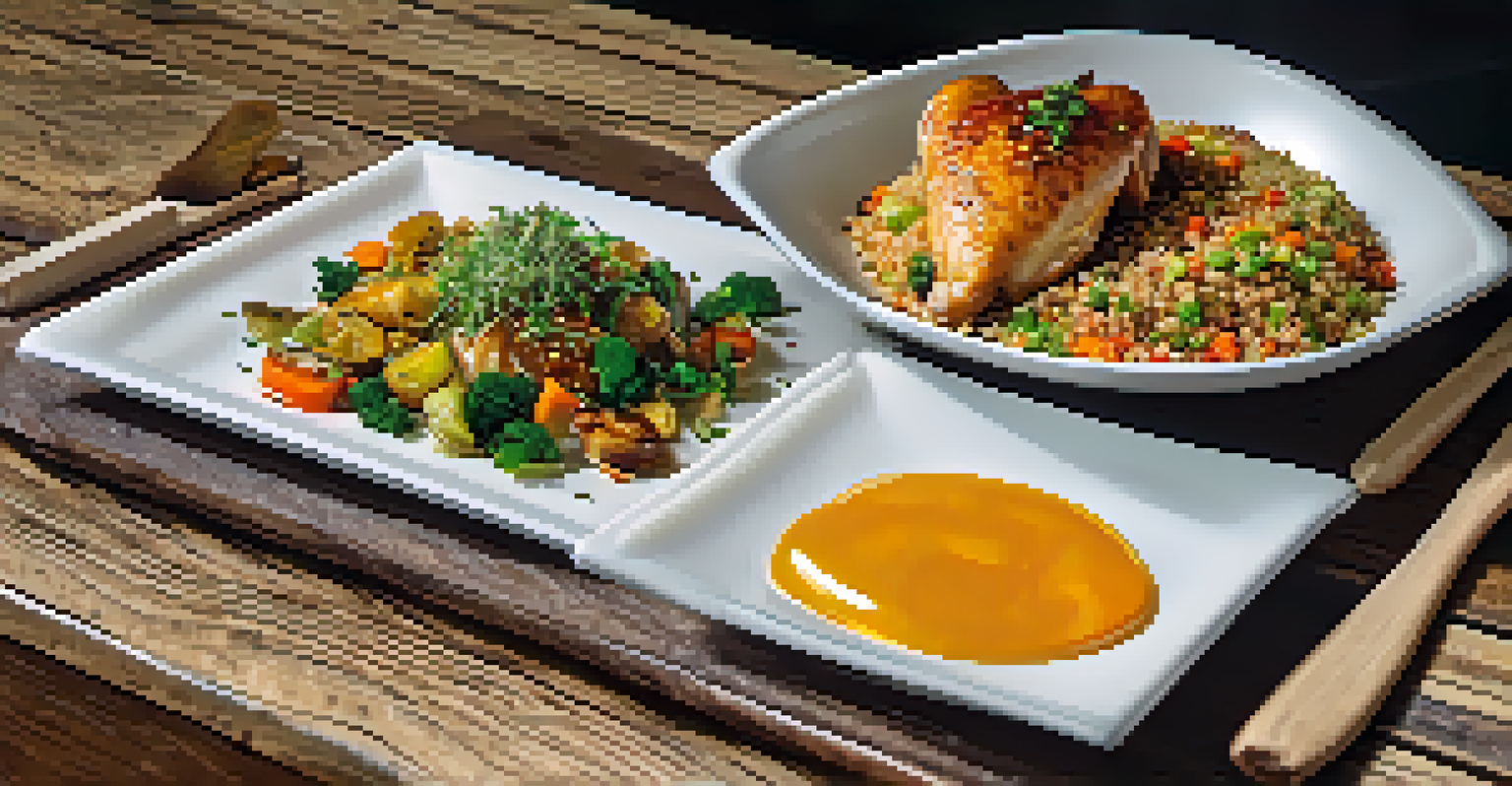Sautéing Secrets: Healthy Methods for Quick Meal Prep

Understanding the Art of Sautéing for Healthier Meals
Sautéing is a cooking technique that involves quickly frying food in a small amount of oil or fat. It's a fantastic way to prepare meals that are not only quick but also packed with nutrients. By cooking at high heat, you can preserve the flavor and texture of your ingredients, making it a go-to choice for busy weeknights.
Cooking is like love. It should be entered into with abandon or not at all.
This method allows you to use a variety of vegetables, proteins, and grains, giving you endless possibilities to create nutritious dishes. Think of sautéing as a dance between your ingredients and the heat, where the right moves bring out the best in each element. Plus, it’s a technique that encourages healthy eating by minimizing the need for heavy sauces or excessive fats.
Whether you're a novice cook or a seasoned chef, mastering sautéing can elevate your meal prep game. It’s all about timing and technique, which means with a bit of practice, you’ll be whipping up delicious, healthy meals in no time.
Choosing the Right Ingredients for Sautéing Success
Selecting the right ingredients is crucial for sautéing. Fresh, seasonal vegetables like bell peppers, zucchini, and spinach not only taste amazing but also retain more nutrients when cooked quickly. Proteins such as chicken, shrimp, or tofu can be added to make a complete meal, ensuring you have a good balance of macronutrients.

Don't forget to consider flavor enhancers like garlic, onions, and herbs. These aromatic ingredients can transform a simple dish into something truly special. Think of them as the secret spices that add depth and complexity to your sautéed creations.
Sautéing Enhances Nutrient Retention
This quick cooking method helps preserve the flavor and nutrients of food, making it ideal for healthy meals.
By mixing and matching ingredients based on what you have on hand, you can keep your meals exciting and diverse. This flexibility not only saves money but also encourages creativity in the kitchen, making meal prep less of a chore and more of a fun adventure.
Essential Tools for Perfect Sautéing Every Time
To get started with sautéing, having the right tools can make all the difference. A sturdy skillet or frying pan is essential, preferably non-stick for easier cleanup and less oil usage. Investing in a good-quality spatula or wooden spoon will help you stir and flip your ingredients without damaging your cookware.
The secret of good cooking is, first, having a good plate, second, a good cook, and third, a good meal.
A lid is also a handy addition when sautéing tougher vegetables or proteins that need a little extra steam to cook through. This simple tool allows you to trap heat and moisture, speeding up the cooking process while keeping your meals tender and juicy.
Finally, consider having a good knife for chopping and prepping your ingredients. A sharp knife not only makes the preparation process faster but also safer, allowing for clean, precise cuts that promote even cooking.
Healthy Oils: Choosing Wisely for Sautéing
When it comes to sautéing, the type of oil you choose can significantly impact the healthiness of your meal. Oils like olive oil and avocado oil are excellent choices due to their heart-healthy fats and high smoke points. Using these oils means you can cook at higher temperatures without worrying about harmful compounds forming.
It's also essential to be mindful of the quantity of oil you use. A tablespoon or two is usually sufficient, allowing you to achieve that perfect sizzle without drowning your ingredients. This approach not only keeps the dish lighter but also allows the natural flavors of your food to shine through.
Choose Fresh Ingredients for Flavor
Using seasonal vegetables and flavorful aromatics can elevate your sautéed dishes and keep meals exciting.
Experimenting with different oils can also add unique flavors to your dishes. For instance, sesame oil can give Asian-inspired stir-fries an authentic taste, while coconut oil can lend a subtle sweetness to tropical recipes. The key is to balance flavor and health for a delicious outcome.
Mastering Heat Levels for Perfectly Cooked Dishes
Understanding heat levels is crucial for successful sautéing. Too high, and you risk burning your ingredients; too low, and they can become soggy. Medium to medium-high heat is generally the sweet spot for sautéing, allowing for quick cooking while maintaining the integrity of your ingredients.
Start by heating your pan before adding oil, as this allows for a quicker sear on your proteins and vegetables. Once the oil shimmers, it’s a sign that it’s ready for action. Add your ingredients in batches if necessary, to avoid overcrowding the pan, which can lead to steaming rather than sautéing.
As you cook, keep an eye on your ingredients and adjust the heat as needed. This attentiveness will help you achieve perfectly caramelized vegetables and evenly cooked proteins, making every sautéed dish a triumph.
Flavor Boosting Techniques for Sautéed Meals
To take your sautéing to the next level, consider incorporating flavor-boosting techniques. One effective method is to add ingredients in stages, starting with aromatics like garlic or onions. These should be cooked until fragrant before adding heartier vegetables or proteins, allowing their flavors to meld beautifully.
Another tip is to deglaze the pan after sautéing. This involves adding a splash of broth, wine, or even water to scrape up any flavorful bits stuck to the bottom. This simple step creates a delicious sauce that can enhance the overall dish without adding unnecessary calories.
Master Heat Levels for Best Results
Understanding and controlling heat levels is essential for achieving perfectly cooked sautéed meals without burning or sogginess.
Finally, don’t shy away from finishing touches like fresh herbs, citrus juice, or a sprinkle of cheese. These ingredients can add a bright note or a creamy richness, transforming your sauté into a gourmet experience right from your kitchen.
Sautéing as a Meal Prep Strategy for Busy Lifestyles
Sautéing is not just a cooking technique; it's a valuable strategy for meal prep, especially for those with busy lifestyles. By dedicating a little time to sautéing on the weekends or during the week, you can create versatile components that can be used in various meals. For example, sautéed vegetables can easily be added to salads, grain bowls, or omelets.
Preparing proteins in bulk can also save time and effort. You can sauté chicken or tofu in larger batches, store them in the fridge, and use them throughout the week in different dishes. This approach not only streamlines your cooking but also encourages healthier eating habits by reducing the temptation to order takeout.

Moreover, sautéed meals can often be made in under 30 minutes, making them a practical option for weeknight dinners. With a little planning, you can whip up delicious, nutritious meals that fit seamlessly into your hectic schedule.